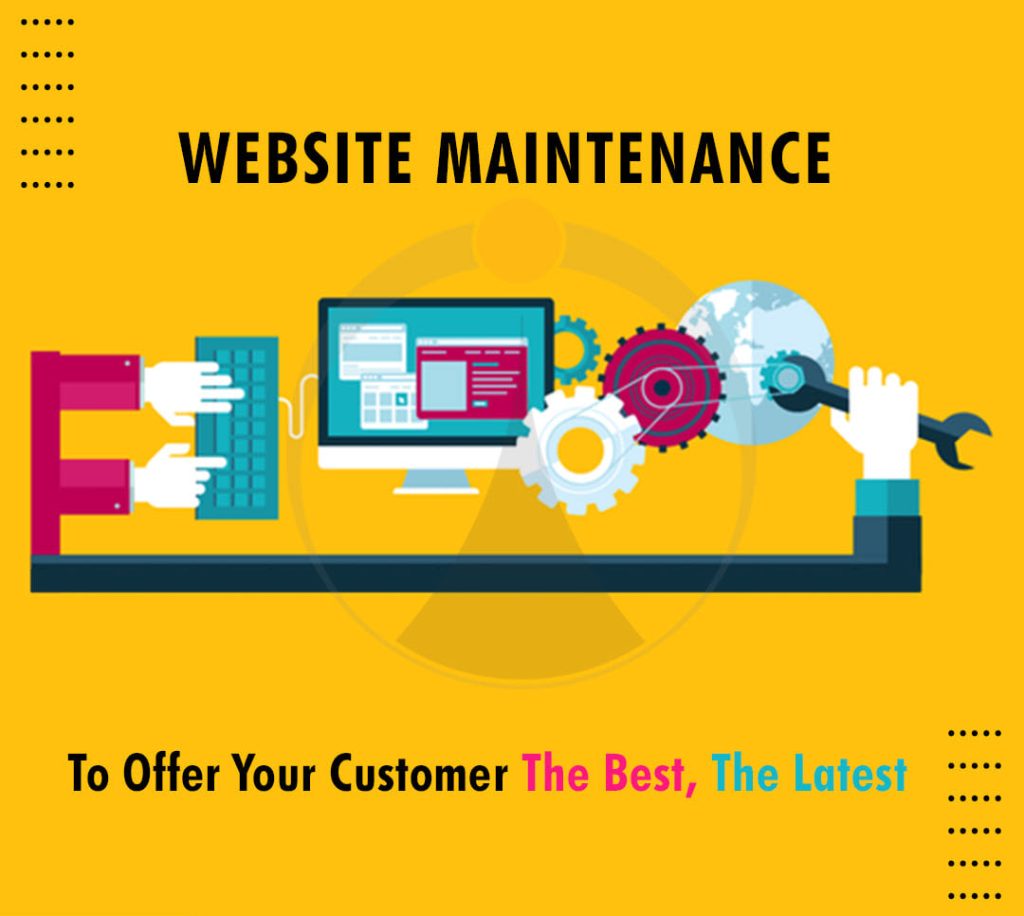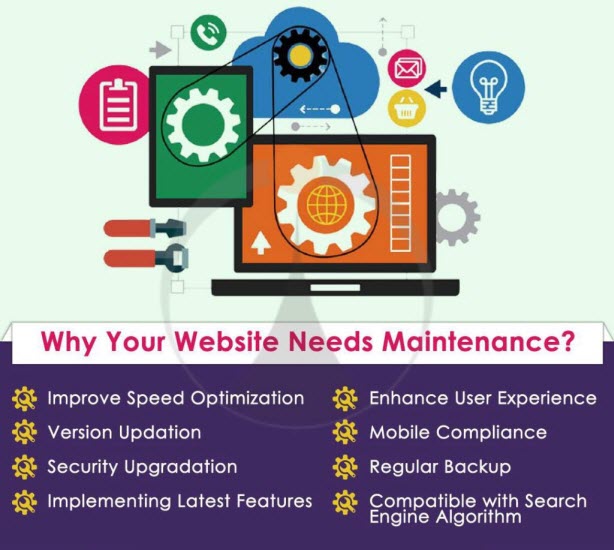In the fast-paced world of the internet, where the digital landscape is constantly evolving, the need for professional website maintenance becomes paramount, especially in a dynamic market like India. As businesses increasingly rely on their online presence, ensuring the seamless functioning, security, and relevance of websites is no longer a luxury but a necessity. In this article, we delve into the various aspects that highlight the importance of website maintenance services in the Indian context.
I. Introduction
A. Definition of Website Maintenance
Website Maintenance encompasses a set of activities aimed at keeping a website running smoothly. It involves regular updates, troubleshooting, and ensuring that all components function optimally.
B. Importance of Website Maintenance
Maintaining a website is not just about fixing issues but also about optimizing performance, ensuring security, and adapting to the ever-changing digital landscape.
C. Relevance to the Indian Context
In a country like India, where digital adoption is rapidly increasing, websites play a crucial role for businesses. The relevance of professional maintenance becomes evident in sustaining a competitive edge.
II. The Dynamic Nature of the Online Landscape
A. Rapid Technological Changes
Technological advancements happen at breakneck speed. Professional maintenance ensures that a website is equipped to handle and leverage these changes effectively.
B. Evolving User Expectations
User expectations evolve, and a website that fails to adapt risks losing its audience. Maintenance is the key to providing an optimal user experience.
C. Impact on Website Functionality
Regular maintenance directly impacts the functionality of a website. From loading times to interactive features, all contribute to user satisfaction.
III. Security Concerns in the Digital Era
A. Rising Cybersecurity Threats
With the increase in cyber threats, websites are vulnerable to attacks. Maintenance involves robust security protocols to safeguard against breaches.
B. Importance of Regular Security Audits
Routine security audits identify vulnerabilities before they can be exploited. This proactive approach is critical in the current digital landscape.
C. Mitigating Risks through website Maintenance
Maintenance goes beyond addressing security issues; it includes implementing measures to mitigate risks, and ensuring a secure online environment.
IV. Ensuring Seamless User Experience
A. Importance of User-Friendly Websites
A user-friendly website is more likely to retain visitors. Maintenance focuses on optimizing user interfaces and overall design for a positive experience.
B. Regular Updates for Enhanced UX
Frequent updates, whether in design or functionality, contribute to an improved user experience. Maintenance ensures these updates are timely and efficient.
C. Accessibility Considerations
Maintenance includes accessibility checks, making sure that the website is usable for individuals with disabilities, and enhancing inclusivity.
V. Search Engine Optimization (SEO) Benefits
A. Role of Maintenance in SEO
Search engines favor regularly updated and well-maintained websites. Maintenance is crucial for SEO, impacting search rankings and visibility.
B. Impact on Search Rankings
Websites that undergo regular maintenance and take care of technical SEO aspects are likely to rank higher in search engine results, increasing their online visibility and reach.
C. Staying Competitive in the Digital Market
In a competitive digital market, staying visible is essential. Regular maintenance ensures a website remains competitive in search rankings.
VI. Addressing Technical Glitches
A. Identifying Common Website Issues
Maintenance involves identifying and addressing common issues like broken links, slow loading times, and other technical glitches.
B. Regular Checks and Troubleshooting
Scheduled checks help in the early detection of technical issues, enabling swift troubleshooting before they escalate into major problems.
C. Minimizing Downtime for Better Performance
Downtime can have severe consequences for a business. Maintenance aims to minimize downtime, ensuring consistent and reliable website performance.
VII. Mobile Responsiveness and Adaptability
A. Significance of Mobile-Friendly Websites
With the surge in mobile users, having a mobile-friendly website is imperative. Maintenance includes testing and optimizing for various devices.
B. Regular Testing for Different Devices
Maintenance ensures that a website looks and functions seamlessly across a variety of devices, providing a consistent experience for all users.
C. Adapting to Changing Mobile Technologies
As mobile technologies evolve, maintenance is crucial for adapting websites to new devices and ensuring compatibility.
VIII. Content Management and Updates
A. Importance of Fresh and Relevant Content
Content is king, and maintaining a website involves regularly updating content to keep it fresh, relevant, and engaging.
B. Scheduled Content Updates
Maintenance includes scheduling content updates, and ensuring that information is current and aligns with the latest industry trends.
C. Engaging Users through Timely Information
By providing timely information, a well-maintained website keeps users engaged and encourages repeat visits, fostering a loyal audience.
IX. Data Backup and Recovery
A. Safeguarding Against Data Loss
Data is a valuable asset, and maintenance involves regular data backups to safeguard against potential data loss due to unforeseen events.
B. Regular Backups as a Preventive Measure
Scheduled backups are a preventive measure, ensuring that even in the event of data loss, recovery is swift and comprehensive.
C. Quick Recovery Protocols in Place
Maintenance includes establishing quick recovery protocols, minimizing the impact of data loss, and ensuring business continuity.
X. Cost-Efficiency and Long-Term Savings
A. Preventing Major Repairs through Regular Maintenance
Regular maintenance is a proactive approach that prevents major issues, reducing the need for extensive and costly repairs.
B. Cost-Effective Strategies for Website Upkeep
Investing in regular maintenance is more cost-effective than dealing with the consequences of neglected websites, such as lost revenue and damaged reputation.
C. Long-Term Savings in the Digital Landscape
In the digital landscape, where change is constant, long-term savings result from maintaining a website that can adapt and evolve without major overhauls.
XI. Compliance with Legal and Regulatory Standards
A. Navigating Legal Obligations in the Online Space
The online space comes with legal obligations, and maintenance ensures that a website complies with industry regulations and standards.
B. Importance of Regular Audits for Compliance
Regular audits, integral to maintenance, identify areas where a website may fall short of legal requirements, allowing for timely corrections.
C. Avoiding Legal Consequences Through Maintenance
Neglecting maintenance can lead to legal consequences. Regular upkeep helps in avoiding legal issues and maintaining a positive online reputation.
XII. Customization and Scalability
A. Tailoring Websites to Evolving Business Needs
Businesses evolve, and so should their websites. Maintenance allows for the customization of websites to meet changing business requirements.
B. Scalability for Future Growth
Websites need to be scalable to accommodate growth. Maintenance includes measures to ensure a website can handle increased traffic and functionality.
C. The Role of Maintenance in Customization
Maintenance is not just about fixing problems; it’s about customizing and tailoring a website to meet specific business goals and objectives.
XIII. Choosing the Right Professional Maintenance Service
A. Factors to Consider in Selecting Maintenance Providers
Selecting the right maintenance service is crucial. Consider factors such as expertise, track record, and the ability to meet specific business needs.
B. Evaluating Service Packages
Different maintenance providers offer various service packages. Evaluate these packages based on your website’s requirements and budget constraints.
C. Case Studies of Successful Collaborations
Explore case studies where businesses successfully collaborated with maintenance service providers, underscoring the importance of the right partnership.
XIV. Future Trends in Website Maintenance
A. Emerging Technologies in Maintenance
The future of website maintenance lies in emerging technologies. Explore the latest trends and innovations shaping the maintenance landscape.
B. Predictions for the Future Landscape
Experts predict the future of website maintenance, offering insights into the technologies and practices that will become integral in the coming years.
C. Preparing Websites for Technological Advancements
Understanding future trends allows businesses to prepare their websites for upcoming technological advancements, staying ahead of the curve.
XV. Conclusion
A. Summarizing the Key Points
Website maintenance is not an option; it’s a necessity for businesses aiming to thrive in the online space. Summarize the key points reinforcing the importance of regular upkeep.
B. Reinforcing the Need for Professional Website Maintenance
Professional maintenance ensures that a website remains a valuable asset, adapting to changes, staying secure, and consistently meeting user expectations.
C. Encouraging Businesses to Invest in Long-Term Success
The article concludes by encouraging businesses to invest in professional website maintenance for long-term success in the ever-evolving digital landscape.















